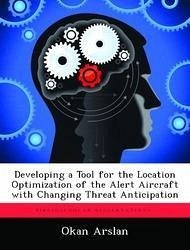The threat to the airspace is posed by the outside world in conventional terms as well as hostilities from within the airspace such as hijacked aircraft. Alert aircraft are located with the sole responsibility of responding to any incident. Different regions of the airspace may have different alert states depending on current intelligence input. Due to non-constant states of threat level, the Turkish Air Force must deploy aircraft to cover the more sensitive regions with a greater number of aircraft with a relatively short response time. This research deals with the problem by developing a tool for the location optimization of the alert aircraft. The tool can adapt to changes in threat anticipation while meeting the objectives of the alert network. Thus, a new location model with backup coverage requirements was formulated, and an interactive tool is developed that is capable of generating the aircraft locations for different user-defined threat anticipation.
Bitte wählen Sie Ihr Anliegen aus.
Rechnungen
Retourenschein anfordern
Bestellstatus
Storno









